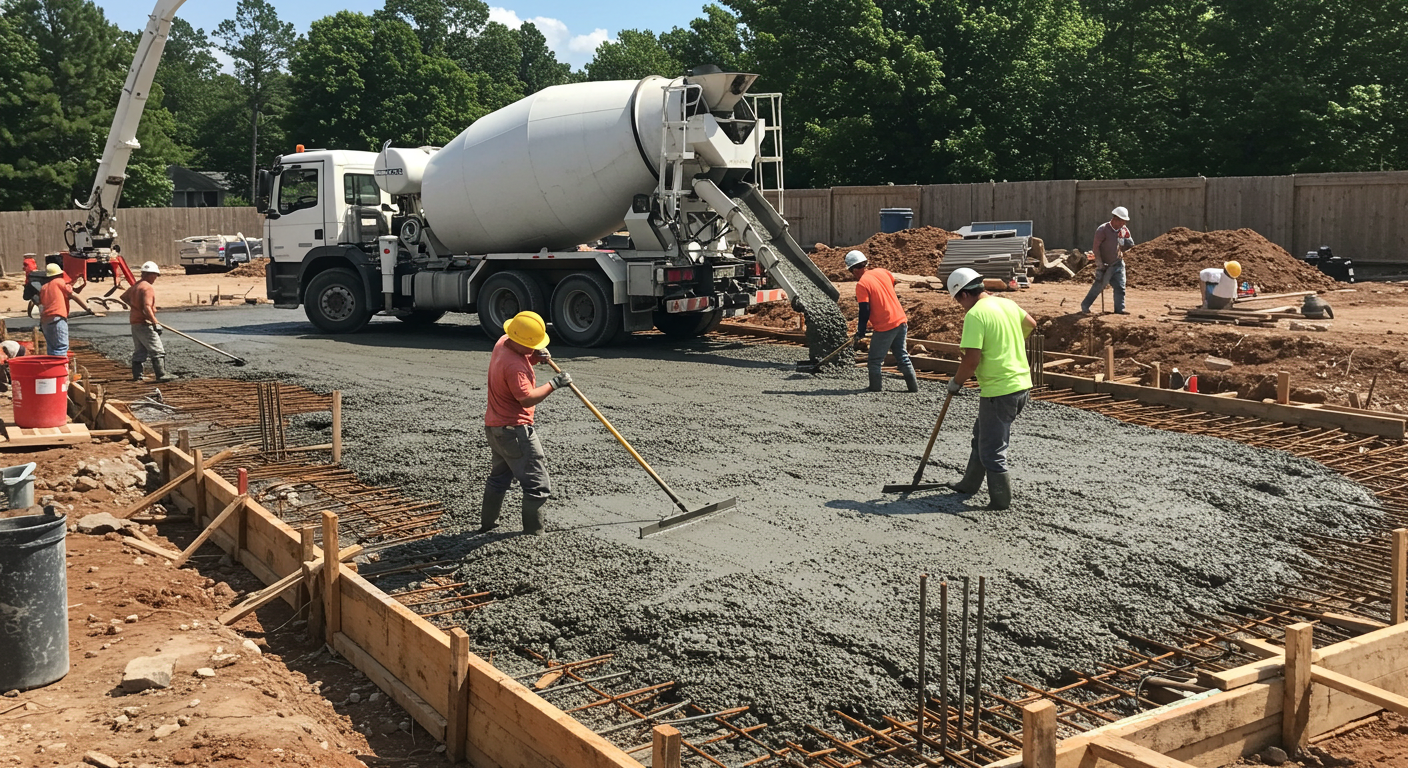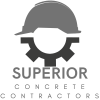How Long Does Concrete Take to Dry?
A Complete Guide
Concrete is one of the strongest building materials, but it doesn’t become hard instantly. If you’ve ever wondered, “How long does concrete take to dry?”, this guide will explain everything in simple terms. Whether you’re working with Superior Concrete Contractors or handling a DIY project, understanding drying and curing times is crucial for long-lasting results.
1. Understanding Concrete Drying vs. Curing
The Science Behind Concrete Hardening
Concrete doesn’t “dry” like paint or mud—it actually hardens through a chemical reaction called hydration. When water mixes with cement, it forms strong crystals that bind everything together.

Why Proper Curing is Essential for Strength
Curing is the process of keeping concrete moist so it hardens correctly. Without proper curing, concrete can crack or become weak. Superior Concrete Contractors always follow best curing practices to ensure durability.
2. Concrete Drying Timeline: Key Stages
Initial Set Time (When It’s No Longer Liquid)
After pouring, concrete stays workable for 1-2 hours. By 4-6 hours, it hardens enough that you can’t reshape it.
Final Set Time (When It Can Bear Weight)
After 24-48 hours, you can walk on it, but heavy loads (like cars) should wait at least 7 days.
Full Cure Time (When It Reaches Maximum Strength)
While concrete feels dry in a few days, it takes 28 days to reach full strength. Some concrete services use special mixes to speed this up.
3. 6 Critical Factors That Influence Drying Time
- Mix Design & Cement Type – Fast-setting cement dries quicker.
- Water-to-Cement Ratio – Too much water weakens concrete and slows drying.
- Ambient Temperature & Humidity – Hot, dry weather speeds drying but can cause cracks.
- Thickness & Volume of the Pour – Thicker slabs (like driveways) take longer.
- Airflow & Ventilation – Good airflow helps moisture escape.
- Use of Accelerators or Retarders – Chemicals can speed up or slow down drying.
For best results, consult Superior Concrete Contractors to choose the right mix for your project.
4. Best Practices for Protecting Fresh Concrete
✔ Covering & Moisture Retention – Use plastic sheets or wet burlap to prevent fast drying.
✔ Temperature Management – In cold weather, use insulated blankets; in heat, mist with water.
✔ Avoiding Early Traffic – Keep people and vehicles off for at least 48 hours.
A professional concrete service will ensure proper protection during drying.
5. Debunking Common Concrete Drying Myths
Myth 1: “Hot Weather Speeds Up Drying”
→ Truth: It dries faster but can crack. Proper curing is still needed.
Myth 2: “Concrete Can’t Be Poured in Cold Weather”
→ Truth: It can, but Superior Concrete Contractors use special mixes and heating techniques.
Myth 3: “Dry Concrete = Strong Concrete”
→ Truth: Strength comes from curing, not just drying.
6. How to Speed Up Drying (Without Compromising Strength)
- Use Accelerators – Chemicals that speed up hardening.
- Optimize Airflow – Fans help in indoor projects.
- Control Humidity – Dehumidifiers in enclosed spaces.
For large projects, a concrete service can provide industrial solutions.
7. Final Answer: How Long Should You Really Wait?
Project Type | Walk On | Light Use | Full Strength |
Sidewalks & Patios | 24-48 hrs | 3-7 days | 28 days |
Driveways | 7 days | 14 days | 28 days |
Foundations | 7 days | 14-28 days | 30+ days |
For guaranteed results, hire Superior Concrete Contractors—they ensure proper drying and curing for long-lasting concrete.
